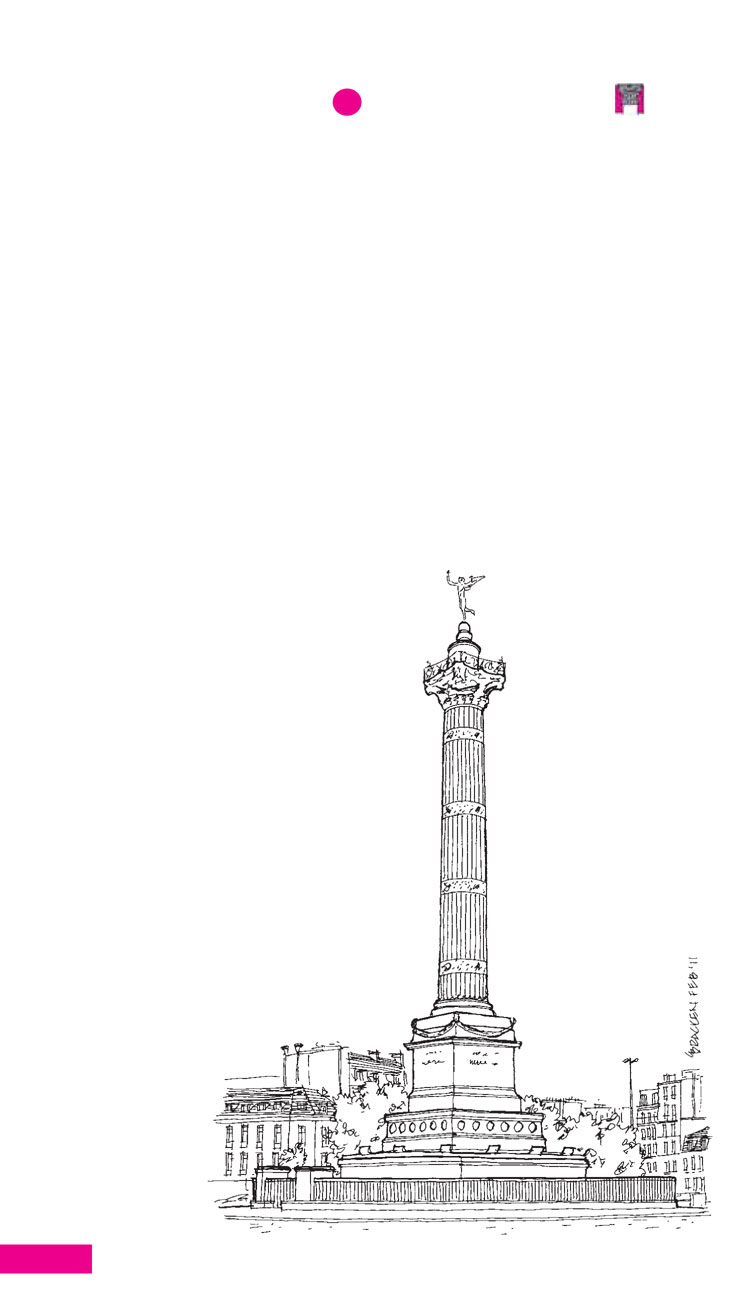1
Exit Bastille metro station onto Place de la Bastille. Nothing now remains of the celebrated prison stormed by the Paris mob on 14th July 1789, the event which sparked off the French Revolution. However, a line of stones set into the pavement from Nos. 5 to 49 Boulevard Henri IV outlines the prison’s former walls and towers. At the centre of this large circus stands the imposing Colonne de Juillet, a memorial to those who died in the 1830 uprising that led to another overthrow of the monarchy; while the crypt below contains the remains of more than 500 victims of the 1848 revolution. This hollow bronze column soars 51.5 metres (170 feet) high and is capped by a statue known as the Genius of Liberty.
Place de la Bastille sits right on the border of the fashionable centre of Paris and the once less-than-fashionable working-class areas to the east. These have now begun to be gentrified, partly thanks to projects like the Opéra National de Paris Bastille. The Canadian-Uruguayan architect Carlos Ott designed this controversial ‘people’s opera’, which opened on 14th July 1989 to celebrate the 200th anniversary of the fall of the Bastille. The massive, curved building, with its façade of glass block and granite, is far from the
19th-century tradition of opera-house design. Its main auditorium houses as many as 2,700 spectators while its performance area has five revolving stages. It also contains rehearsal areas and costume and prop workshops. The ‘people’s opera’ idea is further reinforced by the metro station entrance and the commercial activities located in the building.
Behind the opera house is an elevated walkway that follows the old railway line that used to run to the now-vanished Gare de la Bastille. The first section is known as the Viaduct of the Arts and houses numerous little shops and artists’ workshops. It is only nine metres wide and runs east along Avenue Daumesnil, it is an excellent way of seeing this little-visited part of the city.
Located to the south of Place de la Bastille is the Canal St-Martin, which links
Port de Plaisance Paris Arsenal to the Bassin de la Villette in the north. La Villette is home to the elegant Neoclassical
Place de la Bastille
32

